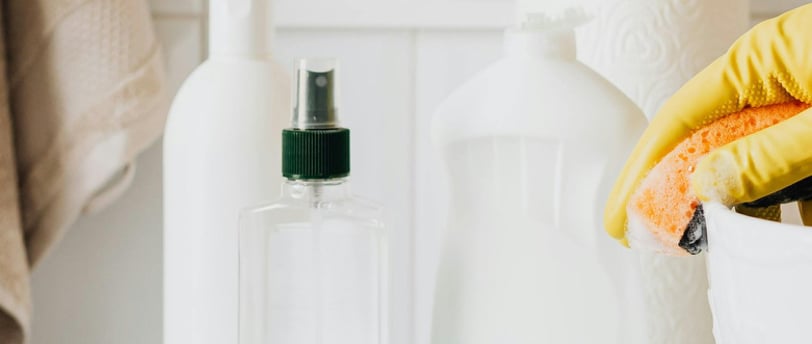In recent years, the growing concerns about the harmful effects of conventional cleaning products on both human health and the environment have driven research into more sustainable and effective alternatives. One such alternative is alkaline electrolyzed water (AEW), a powerful, eco-friendly solution that is gaining recognition for its detergent properties. This blog post explores the science behind AEW and how it serves as an effective detergent.
What is Alkaline Electrolyzed Water (AEW)?
Alkaline electrolyzed water is produced by passing water through an electrolysis process, which involves applying an electric current to the water in the presence of salt. This process divides the water into two components: alkaline water and acidic water. The alkaline water, which is rich in hydroxide ions (OH-), exhibits properties that make it an effective cleaning agent.
The Science Behind AEW’s Detergent Power
The detergent capabilities of AEW stem from several scientific properties that make it an effective cleaner, often surpassing traditional chemical detergents in various applications. Here's why AEW works so well:
High pH and Saponification: AEW has a high pH level, typically ranging from 9 to 12. This elevated pH is one of the key reasons behind its cleaning properties. A higher pH helps break down grease and oils more effectively, which is why AEW is often used in industries like food processing and restaurants to remove stubborn grease from surfaces and equipment.
Additionally, the high pH facilitates a chemical reaction known as saponification, where fats and oils are converted into soap-like substances (soaps or fatty acid salts). This makes AEW effective at emulsifying and removing oily substances from various surfaces.
Microbial Inactivation: Research has shown that AEW has antimicrobial properties due to its oxidative potential, which can break down bacterial cell membranes and inactivate pathogens. This is particularly valuable in settings like hospitals, kitchens, and food processing environments where sanitation is critical. A study published in the journal Food Control demonstrated the efficacy of AEW in reducing bacterial contamination, including common foodborne pathogens like E. coli and Salmonella.
Surface Tension Reduction: One of the key factors in any detergent’s effectiveness is its ability to reduce surface tension. AEW has lower surface tension than regular tap water, meaning it can more easily spread across surfaces, penetrate dirt, and dissolve contaminants. This makes it efficient at cleaning even hard-to-reach areas without requiring the use of harsh chemicals or excessive scrubbing.
Environmental Benefits: One of the most appealing aspects of AEW is its environmental impact. Traditional detergents often contain surfactants, phosphates, and other chemicals that can be toxic to aquatic life and contribute to environmental pollution. AEW, however, is a non-toxic, biodegradable solution that leaves no harmful residues behind. It is a sustainable alternative that helps reduce the carbon footprint of cleaning activities.
Safe for Human Use: Many commercial cleaning products contain harmful chemicals that can irritate the skin or cause respiratory issues. AEW, in contrast, is safe for use around humans and animals when used properly, as it is simply water that has been electrolyzed to have a higher pH. This makes it an excellent option for use in homes, schools, and hospitals, where chemical-free cleaning is a priority.
Applications of AEW as a Detergent
The potential applications of AEW as a detergent are vast and span several industries:
Food Industry: AEW is frequently used to wash fruits, vegetables, and meat, as it effectively removes pesticides, bacteria, and residual dirt without the need for chemical sanitizers. Studies have demonstrated that AEW can help extend the shelf life of produce by reducing microbial contamination.
Healthcare: AEW’s ability to eliminate bacteria and viruses while being non-toxic makes it an ideal candidate for cleaning medical equipment, floors, and surfaces in healthcare settings. It has been shown to reduce hospital-associated infections, which are a significant concern worldwide.
Household Cleaning: Many households are now turning to AEW as a natural, safe cleaning agent. It is used for everything from washing dishes to cleaning countertops, bathrooms, and even glass. Its ability to break down oils and fats, along with its antimicrobial properties, makes it a versatile home cleaner.
Industrial Use: In industries such as manufacturing and construction, AEW is used to clean heavy machinery and industrial equipment. Its ability to cut through oils and grease, without damaging delicate machinery, makes it a highly effective industrial cleaner.
Scientific Studies Supporting AEW’s Efficacy
Numerous studies have been conducted to explore the effectiveness of AEW as a detergent. A study published in the Journal of Applied Microbiology found that AEW was effective in reducing microbial contamination on food surfaces, proving its viability as a disinfectant in the food industry.
Another study in the International Journal of Environmental Research and Public Health examined AEW’s effectiveness in hospitals, finding that it significantly reduced bacterial counts on various surfaces without leaving harmful chemical residues. These findings are consistent across multiple industries where AEW is being used for cleaning and disinfection.
Conclusion: A Sustainable Future for Cleaning
Alkaline electrolyzed water presents a promising alternative to traditional detergents, offering both powerful cleaning capabilities and numerous environmental benefits. Its high pH, antimicrobial properties, and ability to break down fats and oils make it an effective detergent for a wide range of applications, from household cleaning to industrial and medical uses.
As the demand for green, non-toxic cleaning solutions continues to rise, AEW is poised to play a key role in transforming the cleaning industry. By offering a safe, effective, and sustainable alternative to chemical-based cleaners, AEW represents a step toward a cleaner, greener future.


